Harbouring Fanon
A series of ten prints
Hand coloured woodcut and transfer with gold dust.
500m x 380mm
This series of prints merges the concept of harbours as both a literal place, a space in which ships are anchored and merchandise, ideas and languages are exchanged with the concept of giving harbour or shelter to a particular vision of the world. I draw on two visual tropes, early cartography which track European Empires initial forays into depicting the harbours of potentially profitable territories and the contemporary mapping of space via Google Maps. These two tropes are separated by time but are conflated onto specific harbours.
The gold light that spills from the lighthouses depicted in the images can be read as the lure of gold and wealth that drew Europeans to these African harbours. Alongside this interpretation and in dialectical relationship to it is the interpretation that the light is a metaphor for the writings and life of Franz Fanon.
I also see this series as a non mimetic portrait of Franz Fanon through a depiction of some of the literal harbours he travelled to in his lifetime. The ten prints track his life from his birth place on the island of Martinique to the place where he died, Bethesda, Maryland The information on his life that I refer to in this document comes from https://en.wikipedia.org/wiki/Frantz_Fanon
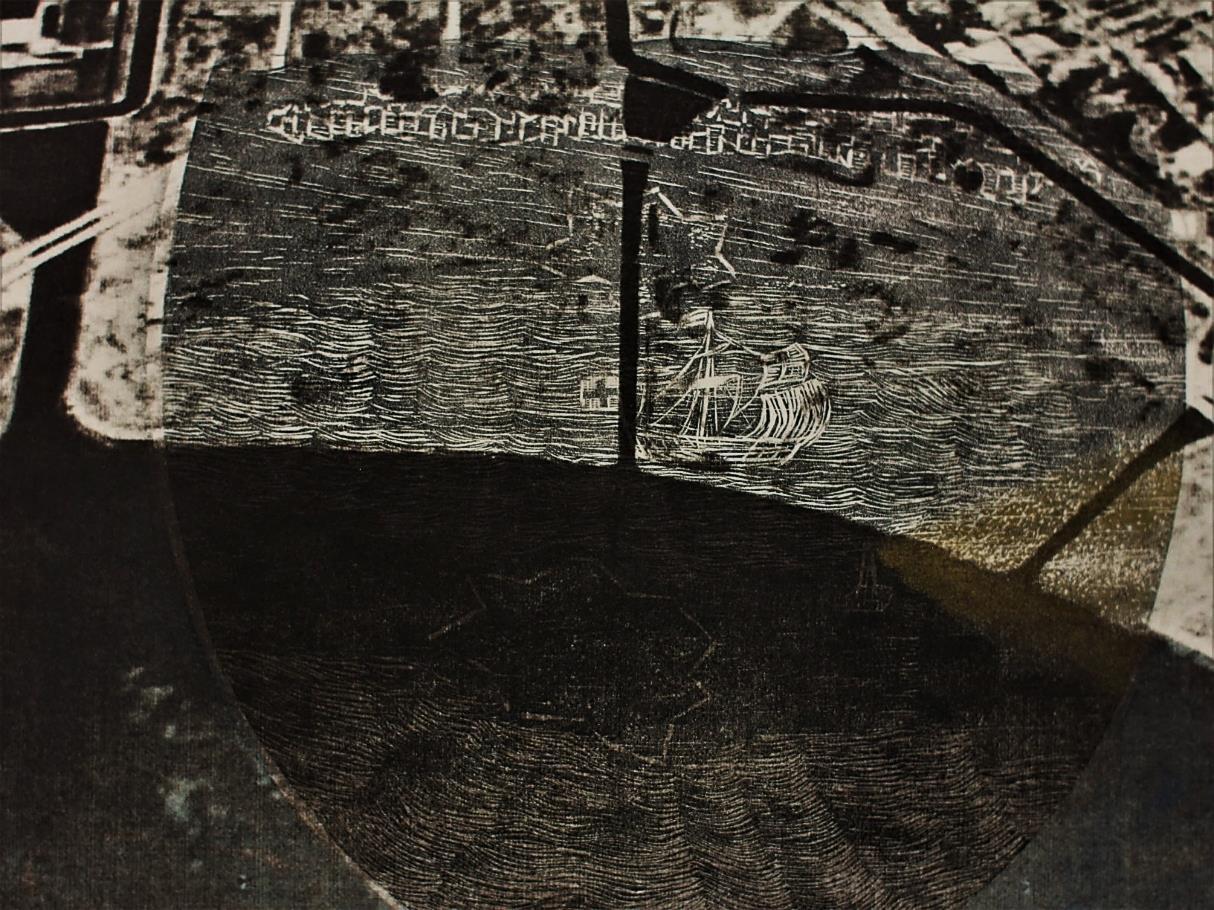
Harbouring Fanon in Martinique
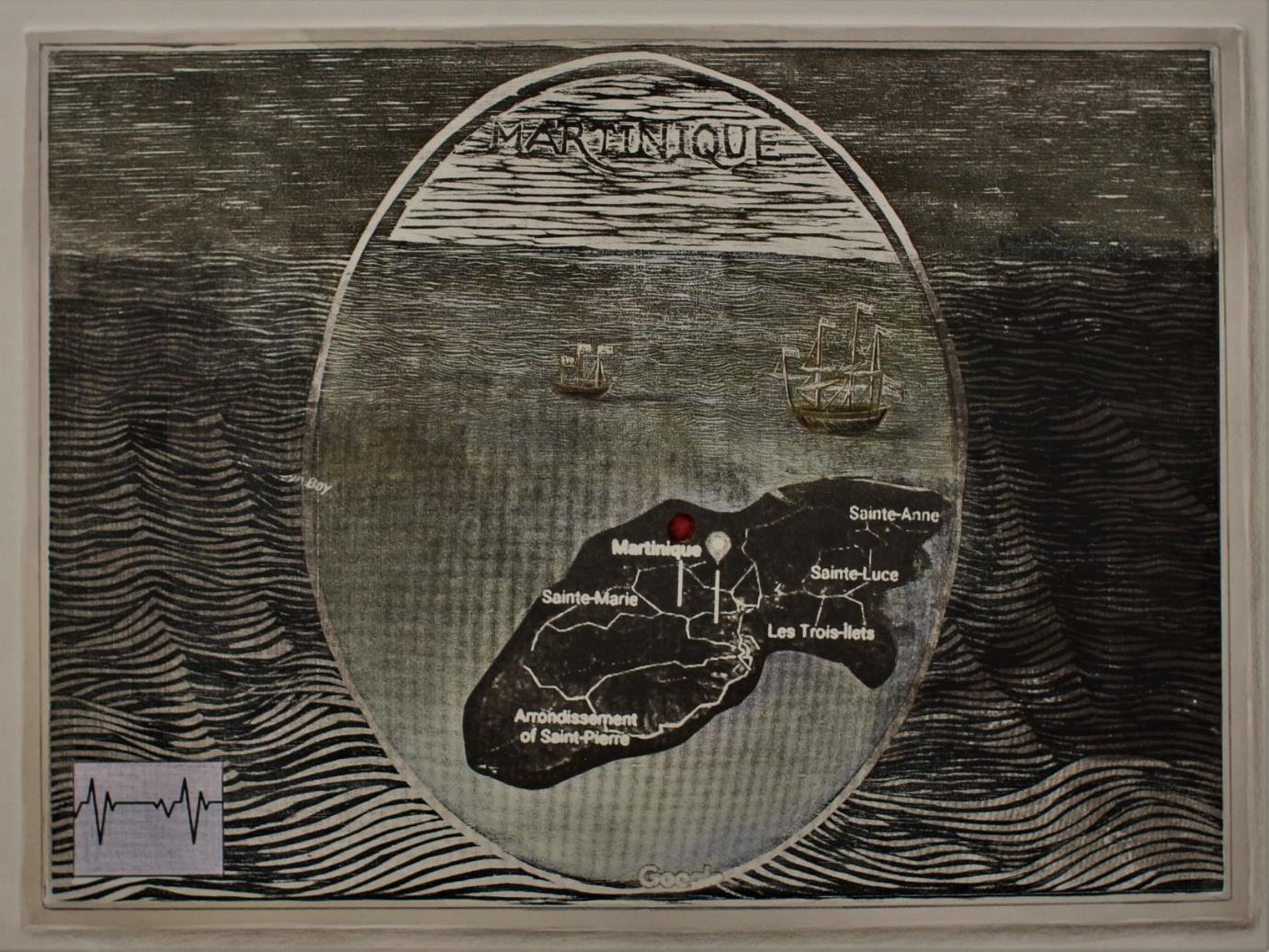
Frantz Fanon was born on the Caribbean island of Martinique, which was then a French colony and is now a French single territorial collective. Fanon left Martinique in 1943, when he was eighteen years old, in order to join the Free French Forces. Harbouring Fanon in Martinique superimposes two visual tropes that are separated by time, a woodcut whose imagery is drawn from early European colonial maps and Google Maps. These two images are collapsed onto the single geographic location of the island of Martinique.

Harbouring Fanon in Dominica
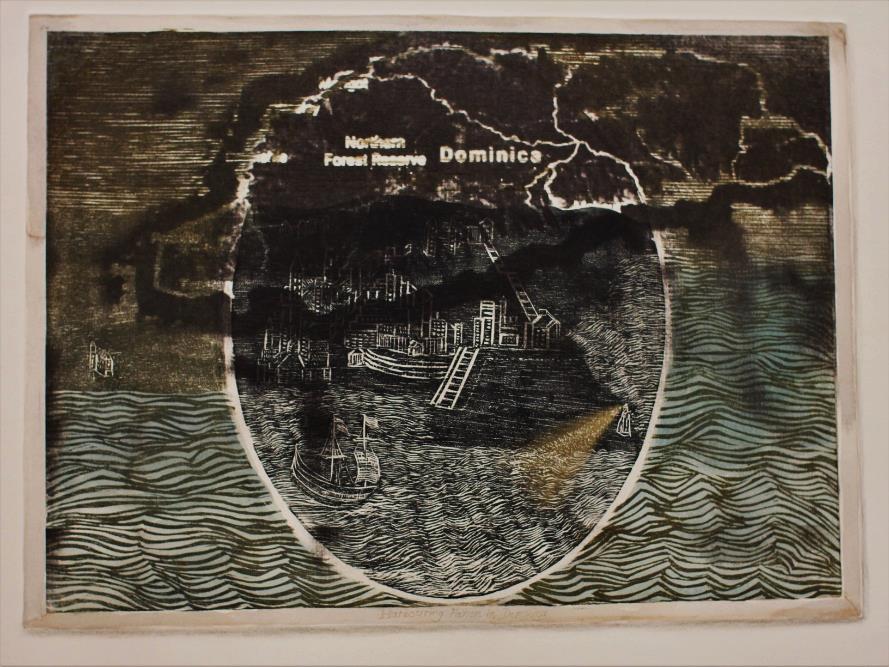
At the age of seventeen, Fanon fled the island as a "dissident" (a term used for Frenchmen joining Gaullist forces), traveling to British controlled Dominica to join the Free French Forces.

Harbouring Fanon in Casablanca
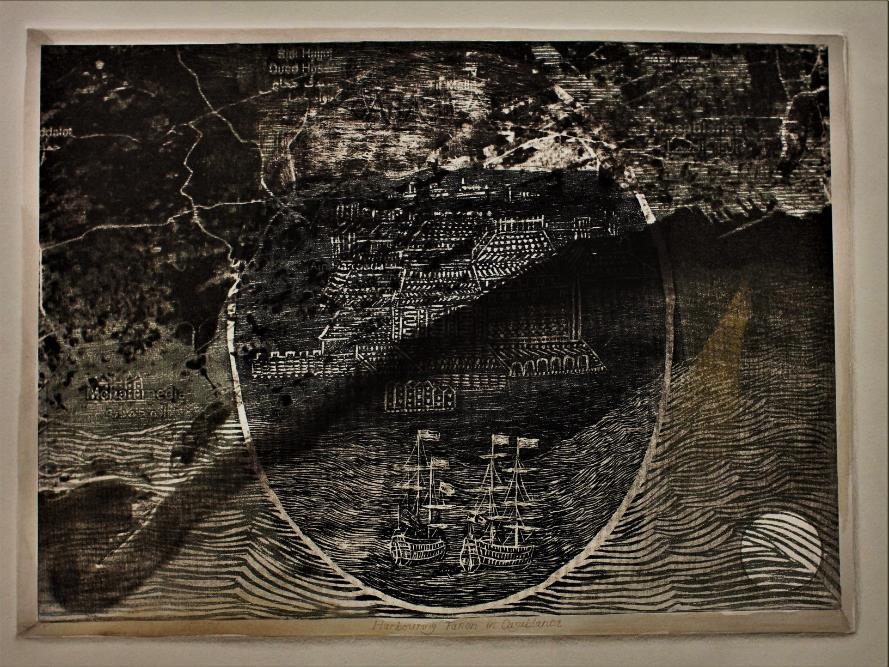
Fanon enlisted in the Free French army and joined an Allied convoy that reached Casablanca. He was later transferred to an army base at Béjaïa on the Kabylie coast of Algeria.

Fanon left Algeria from Oran and served in France, notably in the battles of Alsace. In 1944 he was wounded at Colmar and received the Croix de guerre. Fanon and his fellow Afro Caribbean soldiers were sent to Toulon. Later, they were transferred to Normandy to await repatriation.
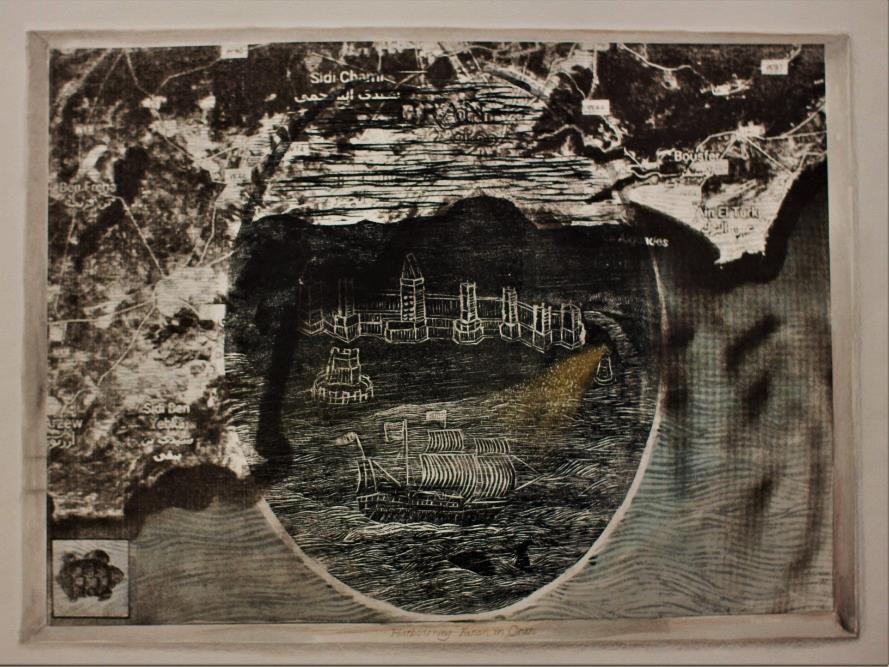

Harbouring Fanon in Oran
Fanon in Alger

Franz Fanon left France for Algeria, where he had been stationed for some time during the war. He secured an appointment as a psychiatrist at Blida Joinville Psychiatric Hospital in 1953. Following the outbreak of the Algerian revolution in November 1954, Fanon joined the Front de Libération Nationale

Harbouring
Fanon left for France and travelled secretly to Tunis. He was part of the editorial collective of El Moudjahid, for which he wrote until the end of his life. He also served as Ambassador to Ghana for the Provisional Algerian Government (GPRA).
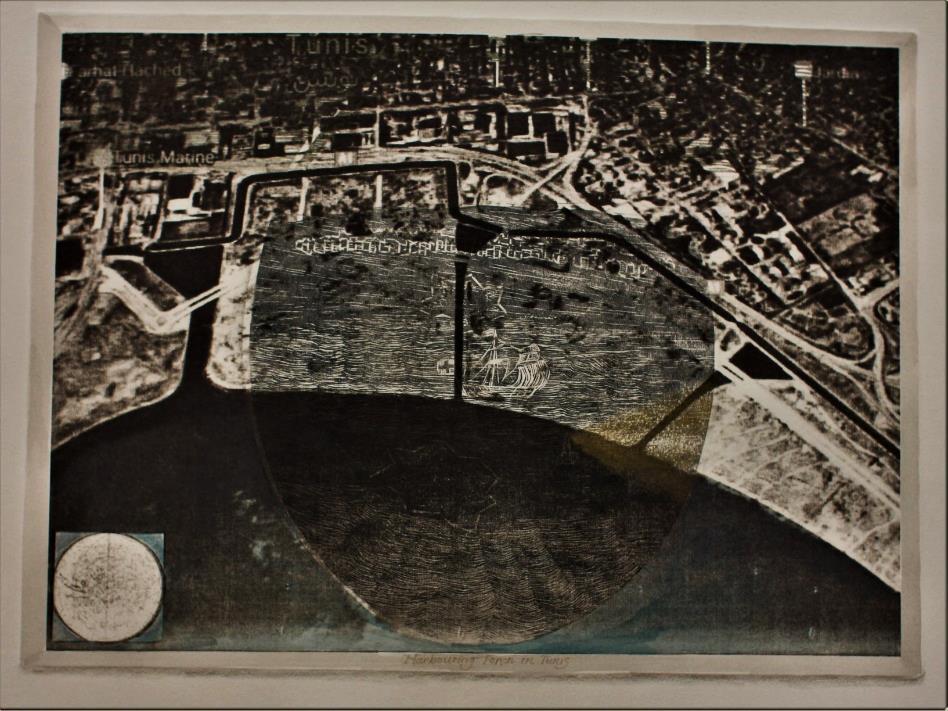

Harbouring Fanon in Tunis
Fanon in Accra
Fanon attended conferences in Accra, Conakry, Addis Ababa, Leopoldville, Cairo and Tripoli. Many of his shorter writings from this period were collected posthumously in the book Toward the African Revolution.


Harbouring

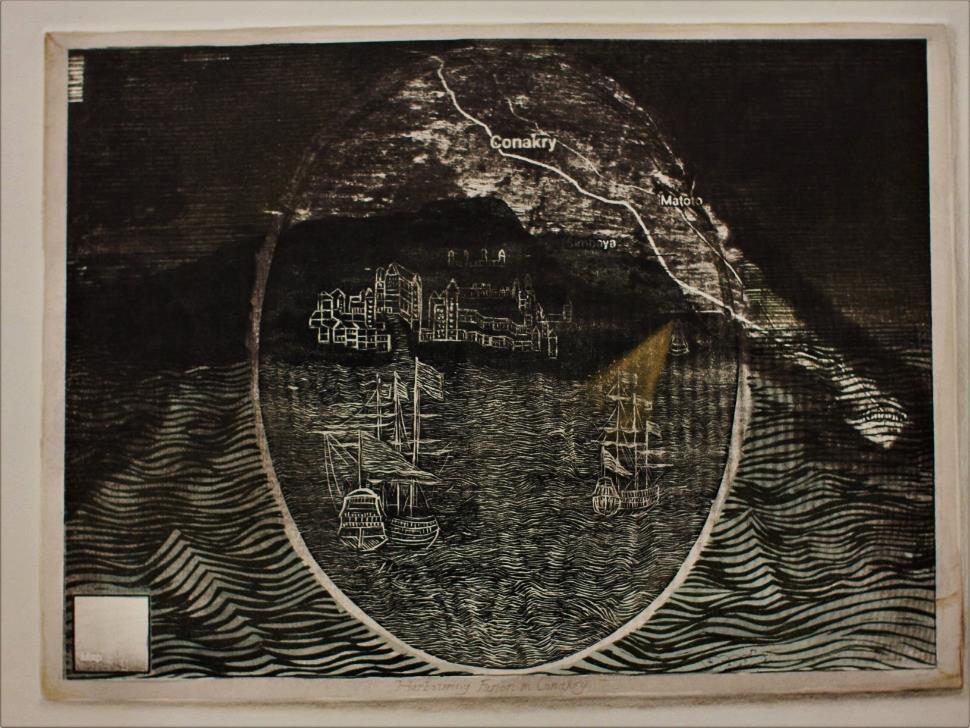
Harbouring Fanon in Conakry

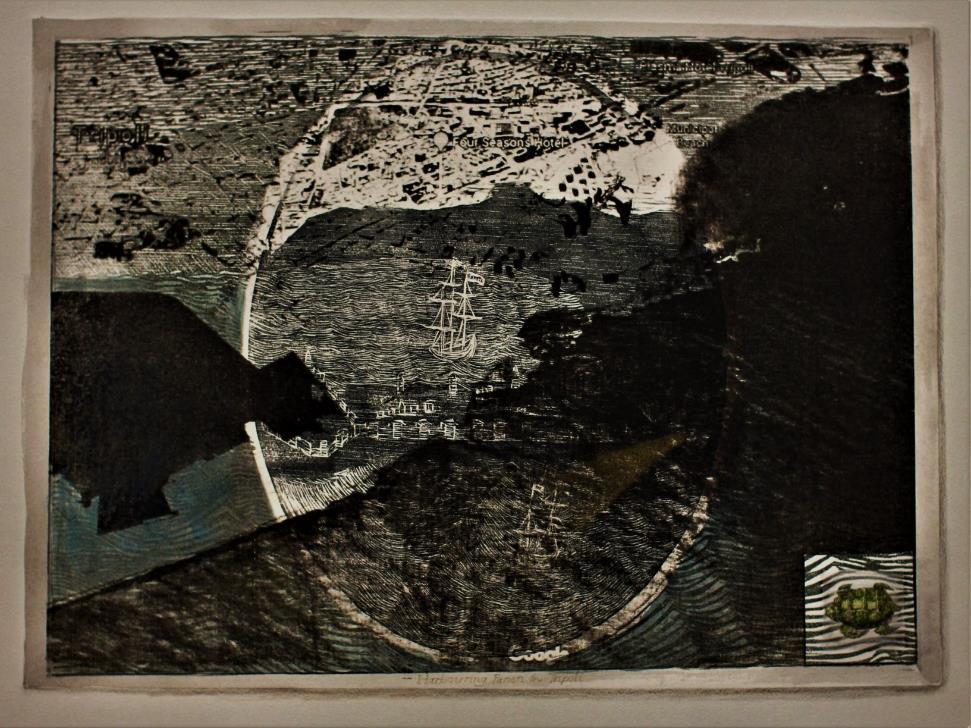
Harbouring Fanon in Tripoli
Harbouring Fanon in Bethesda

Fanon died in Bethesda, Maryland, on 6 December 1961, under the name of "Ibrahim Fanon", a Libyan nom de guerre that he had assumed in order to enter a hospital in Rome after being wounded in Morocco during a mission for the Algerian National Liberation Front. He was buried in Algeria after lying in state in Tunisia. Later, his body was moved to a martyrs' (chouhada) graveyard at Ain Kerma in Eastern Algeria.
In Harbouring Fanon in Bethesda, both the place of Fanons birth and the place of his death are referred to. The central image in Harbouring Fanon In Bethesda depicts the Google maps birds eye view of the location of the hospital in which Fanon died in Bethesda, Maryland, USA. The stylized ocean surrounding this ‘portrait’ is the same sea depicted in the first image of the series Harbouring Fanon in Martinique













